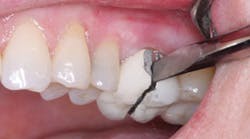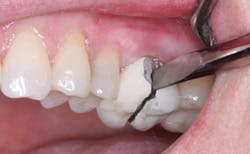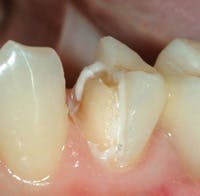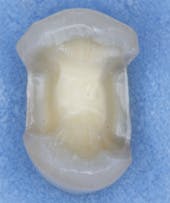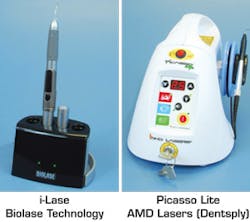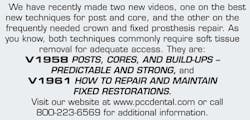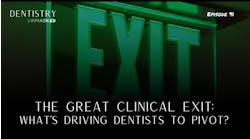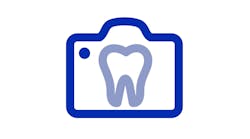by Gordon J. Christensen, DDS, MSD, PhD
In this monthly feature, Dr. Gordon Christensen addresses the most frequently asked questions from Dental Economics® readers. If you would like to submit a question to Dr. Christensen, please send an email to [email protected].
Q I constantly see ads, courses, and articles on how useful diode lasers are in dental practice. I have been using electrosurgery for many years, and I do not feel the need to purchase another new gadget unless it will do something that electrosurgery cannot. Am I missing something?
A This controversy has raged for years in many areas of medicine, including otolaryngology and gynecology, in which practitioners contour and remove significant quantities of soft tissue. I have searched the literature in those fields and others to see if we in dentistry have different clinical needs. Each group, the laser proponents and the electrosurgery proponents, claims superiority.
Each has supportive "research," some funded by manufacturers and some by private researchers. To answer your question, I will discuss the advantages and disadvantages of each for use on soft tissue in dentistry. The most common wavelength of laser used in dentistry is diode at a wavelength of 808 to 980 nm. I will not discuss the use of laser for cutting hard tissue in dentistry, which is another very different and more confounded subject. More detail and scientific investigations on diode lasers may be obtained in the Clinicians Report Foundation Study at www.cliniciansreport.org or in Clinicians Report June 2012, Vol. 5, Issue 6.
Advantages of electrosurgery
An inexpensive scalpel will accomplish most soft tissue cutting needs well (Fig. 1). However, most dentists have an electrosurgery unit and use it routinely in practice (Fig. 2). These devices operate effectively for many years without repair and are inexpensive. Although electrosurgery advantages are well known to dentists who use this concept, I will review them below to allow a comparison with diode lasers.
The advantages of electrosurgery in dentistry are:
- A significantly lower cost than a diode laser.
- Often a lower cost than most other wavelengths of lasers.
- The electrosurgery electrode (wire) may be bent to meet the clinical contour need, allowing easy smoothing of soft tissue, such as pontic areas that require contouring, or palatal areas that have irregularities.
- Electrosurgery electrodes cut on their side as well as their ends, which affords easy access for contouring or cutting deeply into soft tissue.
- Electrosurgery cuts extremely rapidly when compared to a diode laser.
- When on the proper setting, hemostasis is almost immediate.
- Assuming the electrode is cleaned frequently while operating, the cutting consistency, speed, and depth of cuts are very good.
- After cutting, the wound is nearly painless.
- Electrosurgery electrode tips can be modified into a pencil-like shape, allowing extremely narrow and precise cuts.
- Although not considered a significant advantage, the electrode is self-disinfecting.
Electrosurgery users will admit the following disadvantages:
- You must anesthetize patients undergoing electrosurgery.
- Any way you explain it to patients, the word electrosurgery causes fear for some, while laser appears to elicit acceptance, probably because of the advertising for Lasik surgery.
- Patients don't care for the burning flesh smell during cutting, which is stronger than when a diode laser is used.
- The burning flesh taste produced in the mouth by electrosurgery remains for a significant period of time.
- Because of the fast cutting potential of electrosurgery and the low tactile sense while cutting, overcutting of tissue may be experienced.
- Because of high heat production while cutting, electrosurgery should not be used around implants. This can cause loss of osseointegration of implants.
What are the advantages of a diode laser for soft tissue cutting?
Diode lasers have some significant advantages that make them desirable in typical dental practices (Fig. 3).
- Minimal local anesthetic needed, but most patients prefer some local anesthetic.
- Does not harm dental hard tissue.
- Judicious use should not injure dental pulp.
- Can be used around implants because of lower heat production than electrosurgery and lack of electrical conduction. However, diode lasers produce significant heat as shown in research by the Clinicians Report Foundation, and careful use is suggested (Clinicians Report June 2012, Vol. 5, Issue 6).
- Can be used around full metal and PFM crowns.
- Can be used around amalgam or gold alloy restorations.
- Can be used around metal bars or any other metal in the mouth.
- Laser can be a significant marketing tool for some patients, probably because of wide usage in Lasik surgery.
What are the disadvantages of diode laser use?
- Initial purchase costs that are significantly more than electrosurgery.
- Learning period necessary because of manufacturer concern about laser danger.
- Cuts much slower than electrosurgery.
- Danger of laser beam.
- Cutting large pieces of soft tissue is time consuming.
- Scalpel or electrosurgery can accomplish most techniques faster and easier than laser techniques.
Is there a need to use both electrosurgery and diode laser?
I will answer this candidly, summarizing my observations from the scientific literature as well as my own clinical experience over many years. Some dentists will undoubtedly disagree with my admittedly biased opinion.
If I were forced to select only two of the three modes of cutting soft tissue, my choices would be very easy because of the reasons listed above. I would prefer to use scalpel and electrosurgery.
However, there are many times in a day that all of us need to contour or remove soft tissue around a metal object, primarily an implant. The chance of causing harm with electrosurgery is always present. What harm? Electrosurgery used too close to bone can cause osteonecrosis. Using electrosurgery around implants can cause deintegration of the implants. Electrosurgery cuts so fast that it is easy to remove too much soft tissue. I have experienced all of the above.
of the diode laser cuts were nearly identical. Electrosurgery cuts with standard electrode were slightly narrower (tip sharpened to pencil point makes narrower cut), and scalpel cuts were very minimal. From left to right are different brands of diode laser, and far right was electrosurgery.
It should be clear to you that both modes of soft tissue surgery have advantages and disadvantages. It is logical to use both.
I see the following logical examples for electrosurgery and laser use, but I'm sure some readers will disagree with my opinions.
- Tissue management around crown preparations -- The two-cord tissue management technique, styptic pastes, or a combination of the two are most common and are very successful. Laser can be less traumatic and more predictable than electrosurgery for this use.
- Pericoronitis flap -- Electrosurgery is much faster and easier.
- Frenectomy -- Electrosurgery is faster, but laser is often less traumatic.
- Removal of soft tissue coronal to an implant -- Laser is best because of lower heat production and lack of electrical conduction during cutting.
- Removal of a lesion from the tongue -- I prefer electrosurgery or scalpel because they allow a precise and fast cut. However, laser can certainly be used for this purpose.
- Gingivectomy -- Based on clinician preference.
- Removal of a small piece of soft tissue while making impressions for crowns -- An electrosurgery tip sharpened to a pencil point makes a very narrow and precise cut. Many prefer laser but it removes more soft tissue.
- Removal of soft tissue growth around a metal bar -- Laser or scalpel is best because of lower heat production and lack of electrical conduction.
- Removal of soft tissue very close to bone -- Laser is less problematic when close to bone.
- Removal of any large piece of soft tissue -- Electrosurgery is best because of the ease and speed of cutting.
Diode lasers brand examples
There are many brands of diode lasers. The Clinicians Report Foundation recently compared the clinical scientific characteristics of numerous diode laser brands (Clinicians Report June 2012, Vol. 5, Issue 6). The cuts made by the lasers were very similar in speed, depth, width, and ease of use, but the cost varied significantly (Fig 4). Based on many variables such as cost, the two diode laser brands shown in Fig. 5 were rated highest.
Summary
Both electrosurgery and diode laser have a legitimate place in typical dental practices. It is my opinion that some practitioners will benefit from buying both and using them in the situations I described in this article.
Gordon Christensen, DDS, MSD, PhD, is a practicing prosthodontist in Provo, Utah. He is the founder and director of Practical Clinical Courses, an international continuing-education organization initiated in 1981 for dental professionals. Dr. Christensen is a cofounder (with his wife, Dr. Rella Christensen) and CEO of CLINICIANS REPORT (formerly Clinical Research Associates).
Past DE Issues
